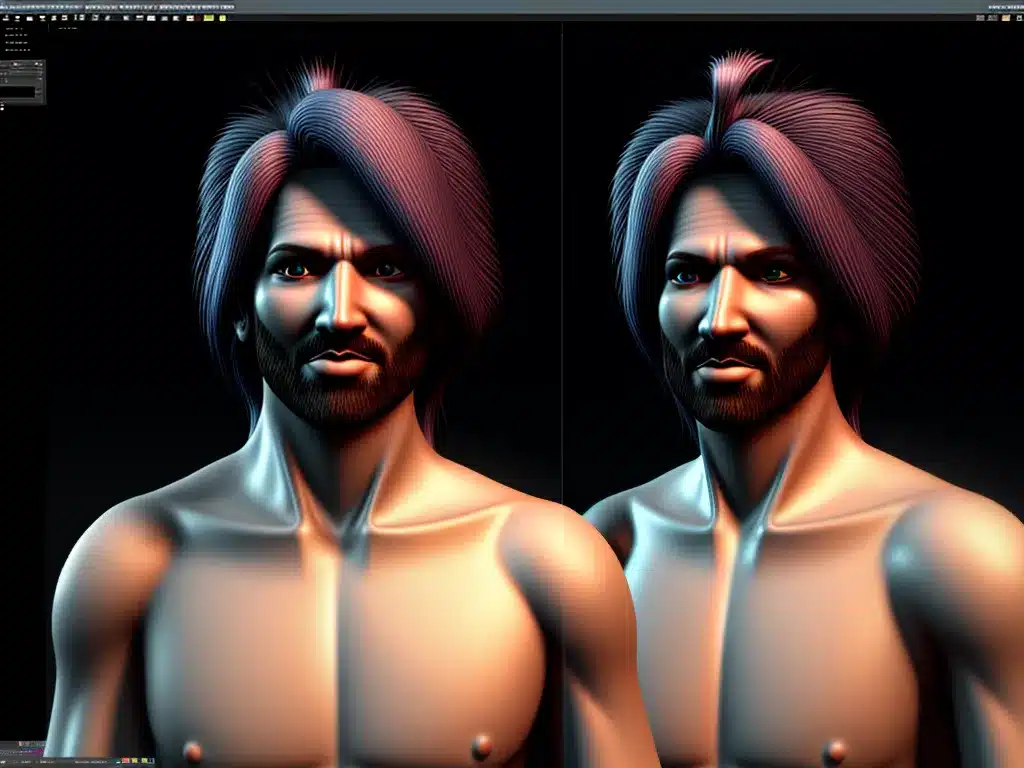
Introduction
Computer-generated imagery (CGI) has revolutionized animation by enabling the realistic simulation of hair and cloth. As computing power has increased, so too have the capabilities for replicating the complex physics of strands and fabric in 3D animation software.
In this article, I will provide an in-depth look at the advances that have been made in CG hair and cloth simulation, focusing on the key innovations that allow animators to achieve greater realism.
History of Hair and Cloth Simulation
Early Hand-Animation Techniques
In traditional 2D animation, hair and cloth were drawn by hand, frame by frame. This required tremendous skill and was very labor-intensive. Effects like billowing dresses or blowing hair required meticulous attention to physics and motion.
Disney’s 1937 film Snow White and the Seven Dwarfs featured some of the earliest examples of realistic, hand-drawn cloth animation with the princess’s flowing cape and skirt. The 1989 film The Little Mermaid also pioneered new techniques for hand-animating underwater hair motion.
Transition to Computer-Assisted Animation
As computer animation matured in the 1990s, new tools emerged to assist with animating hair and cloth. Programs like Alias/Wavefront’s Maya could simulate basic cloth properties like stretch, bend, and collision.
Pixar’s Geri’s Game (1997) used simplified hair and cloth solvers to animate the old man’s motions. Meanwhile, Pixar’s 1998 short film Tin Toy featured a pioneering cloth simulator to animate the baby’s blanket.
Modern Simulation Techniques
In the 2000s, simulation capabilities rapidly improved. Disney’s Tangled (2010) set new benchmarks for CG hair with over 140,000 individually rendered strands on the heroine Rapunzel. And in Pixar’s Brave (2012), Merida’s curly red locks stretched animation technology to new limits.
On the cloth side, character wardrobes like Elsa’s ice dress in Disney’s Frozen (2013) leveraged advanced material properties and collision detection. And in 2021, Disney’s Cruella pushed cloth simulation even further for the lavish dresses and capes.
Key Components of Hair and Cloth Simulators
To replicate the complexity of hair and cloth, modern CG simulators rely on three core components:
Dynamics Solvers
These are physics engines that calculate the motion and deformation of hair strands and fabric over time. They simulate properties like gravity, inertia, stiffness, mass, collisions, and wind. Popular solvers include Maya’s Nucleus, Houdini’s Vellum, and Ziva’s VFX software.
Strand and Fabric Representation
Hair strands can be represented as chains of point masses connected by springs. Cloth is typically modeled as a mesh of triangular or quadrilateral faces. Higher resolution meshes produce more detail but require more computing power.
Collision Detection
Accurately detecting collisions between hair, cloth, and body surfaces is key for realistic interactions. This enables effects like hair draping over a shoulder or fabric bunching up against an elbow. Specialized collision detection algorithms speed up these complex computations.
Advances in Hair Simulation
Strand-Level Dynamics
Earlier hair simulations modeled entire hairstyles as masses of particles. Modern solvers can apply physics at the individual strand level for better clumping, curling, and strand-to-strand interactions.
Interactivity
New runtime engines like Unreal Engine’s Chaos Cloth add interactivity to hair simulation, rather than pre-baking physics offline. This allows animators to manipulate simulations in real time for faster iteration.
Grooming Tools
Procedural grooming tools automate the placement and generation of guide hairs to specify style and volume. Artists can still control the overall look while leaving the thousands of individual strands to the simulator.
Texturing and Lighting
Advances in shaders, lighting, transparency, and scatter effects allow rendered hair to better show realistic highlights, coloration, and fine detail. Hair can even react to dynamic or animated environments and lighting.
Advances in Cloth Simulation
Two-Way Coupling with Bodies
Newer cloth solvers can simulate the two-way interaction between fabric and character bodies. This allows effects like sliding clothing to gather and stretch realistically as characters animate.
Material Properties
Modern cloth simulators model nonlinear material behaviors for more realistic wrinkling, stretch, and motion of different fabric types. Key properties include stiffness, shear resistance, and tensile recovery.
Multi-Layer Garments
Simulating multilayer garments like jackets over shirts is now possible, with collision and friction between layers. Different materials can be assigned to each layer for proper motion and interactivity.
Wet Cloth and Other Effects
Special solvers have been developed to handle unique materials like wet cloth, leather, rubber, plastic, viscous and sticky fluids, and melting effects on fabrics. These expand the creative possibilities for clothing animation.
Conclusion
In summary, key innovations in dynamics solvers, faster collision detection, interactive grooming tools, advanced rendering, two-way body coupling, nonlinear material properties, multi-layer garments, and specialized effects have revolutionized cloth and hair simulation for feature animation. As computing power grows, CG artists will keep pushing the boundaries of digital hair and cloth to bring even greater realism to virtual characters and worlds. The future looks exciting as simulation accuracy steadily improves in tandem with increasing creative control.












